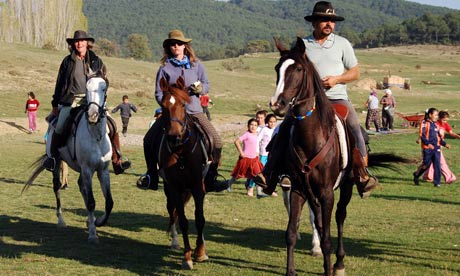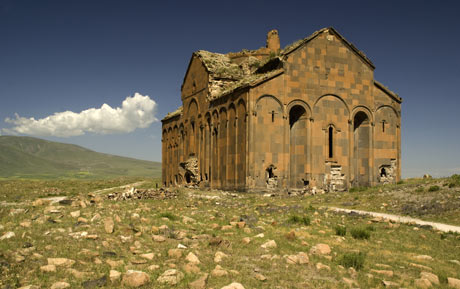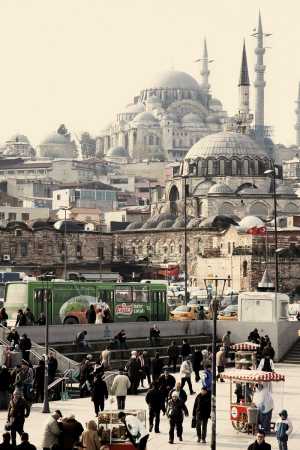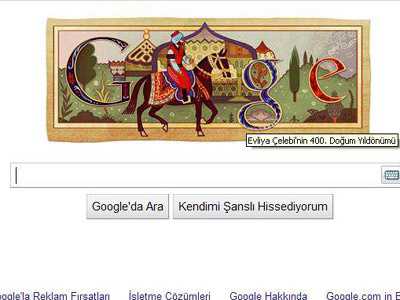From a riding trek along the Evliya Çelebi Way, to boarding the Dogu Express, to sailing the Ceramic Gulf, or cycling in Cappadocia, there is more than one way to explore Turkey
-
Harriet O’Brien
- The Guardian

Cycle in Cappadocia
With its golden landscape of great rock cones and spires known as “fairy chimneys”, the central mountainous region of Cappadocia looks like the stuff of fantasy. This other-wordly area is exhilarating cycling terrain, with quiet tracks and dirt roads winding through weird and wonderful volcanic scenery. EcoTurkey has several eight-night cycling trips here, stopping at rock-cut churches and remote villages, and staying in small hotels and cave rooms. The Cappadocia Adventure Biking Tour is graded “moderate” and would suit those with a reasonable level of fitness. It is a circular trip from Kayseri, taking in Soganlı valley, Nar lake and the incredible monastery and churches at Selime.
• The next trip with EcoTurkey (020-3119 0004, ecoturkey.com) is from 11-18 May and costs from £650pp, including accommodation, meals, guide, and support vehicle, but not flights. Fly to Istanbul, then take aTurkish Airlines) flight to Kayseri. Mountain bikes can be hired from Kayseri for about £110 a week. Or local company Argeus Tourism and Travel can tailor-make individual trips
Drive the Aegean Coast
A leisurely independent road trip from Istanbul to Bodrum will take you to some of Turkey’s most poignant and impressive sites. Among the most notable are Troy; the cemeteries of Gallipoli; Assos, with the remains of the Doric temple of Athena; the ancient Greek city of Pergamon; Ephesus, whose Temple of Artemis was one of the seven wonders of the ancient world, and the remains of Priene, with the striking backdrop of Mount Mykale – but there is plenty more along the way. Overnight stops could include Cunda island, also known as Ali Bey Adasi, near Troy, where the seven-room Otel Sobe hotel is a delight, and the pretty Ottoman village of Sirince, where Nisanyan House hotel has been developed from an atmospheric old inn. The latter is close to Ephesus, so convenient for getting to this much-visited monument early, and avoiding the worst of the crowds.
• Car hire from Istanbul’s Atatürk airport and also downtown Sultanahmet is available through a number of agencies including Hertz and Europcar
Ride the Evliya Çelebi Way
 Riding the Evliya Celebi route in Turkey.Remote areas of Turkey’s north-west became accessible when a newhorse riding and hiking trail opened in 2011. It follows part of the pilgrimage route of the celebrated 17th-century traveller and adventurer Evliya Çelebi – who was also a talented dervish, musician and writer. Developed from goat tracks, forestry paths and Roman and Ottoman roads, the trail passes some of the country’s most spectacular landscape, taking in ancient hill forts and villages that are well off the beaten track, as well as beautiful stretches of Lake Iznik. The full route is roughly 650km and takes about 25 days to complete on horseback, but it’s possible to do shorter sections. In October, In the Saddle has a 14-night riding trip starting at the village of Hersek, near Istanbul, and finishing at Kütahya, the ancestral home of Evliya.
Riding the Evliya Celebi route in Turkey.Remote areas of Turkey’s north-west became accessible when a newhorse riding and hiking trail opened in 2011. It follows part of the pilgrimage route of the celebrated 17th-century traveller and adventurer Evliya Çelebi – who was also a talented dervish, musician and writer. Developed from goat tracks, forestry paths and Roman and Ottoman roads, the trail passes some of the country’s most spectacular landscape, taking in ancient hill forts and villages that are well off the beaten track, as well as beautiful stretches of Lake Iznik. The full route is roughly 650km and takes about 25 days to complete on horseback, but it’s possible to do shorter sections. In October, In the Saddle has a 14-night riding trip starting at the village of Hersek, near Istanbul, and finishing at Kütahya, the ancestral home of Evliya.
• From £2,349pp, including accommodation, guide, riding, and most meals, but not flights to Istanbul. The trip runs from 5-19 October, with the possibility of shortening the ride and returning on 12 October. 01299 272997, inthesaddle.com
Cruise the Ceramic gulf
A cruise on a traditional gulet sailing boat is one of the most captivating ways of exploring Turkey’s southern coast, sailing around long mountain-backed peninsulas and stopping at sites largely inaccessible by road.Peter Sommer Travels offers a particularly appealing and remote trip around the Ceramic gulf, off Bodrum. This is one of the most unspoilt parts of the south-west region, with seascapes of quiet coves and deep inlets, and a landscape dotted with sites of immense historical interest. There is plenty of opportunity to swim, kayak and snorkel along the way. Highlights include the wonderfully preserved remains of the marble city of Knidos, and the castle of St Peter in Bodrum, built by the Knights of Rhodes and now one of the world’s most renowned museums of underwater archaeology.
• From £2,065pp (based on two sharing) including transfers to and from the boat, all meals on board, entrance fees, excursions from the gulet and guiding, but not flights. The next trip runs from 8-15 June. 01600 888220, petersommer.com
Take the train to Kars
 Remains of Great Cathedral at Ani, ruined capital of the Armenian Kingdom, near Kars. Photograph: AlamyThe Dogu Express runs across Turkey from the capital, Ankara, to the city of Kars on the Armenian border, passing through magnificent rugged scenery, most notably along the Euphrates river. It makes a relaxing yet thrilling trip and, complete with couchettes and restaurant car, is a comfortable way to venture to the wild east of the country. One of the highest cities in Turkey, Kars is home to the dramatic remains of a 12th-century castle, and is a convenient gateway for a visit to the striking ruins of Ani, an Armenian medieval city that is now on the Turkish side of the border. Trains leave from Ankara every day at 6pm and arrive at Kars the following day at 6.29pm. Note that for this year and next, Istanbul’s Haydarpasa railway station is closed for engineering works. To reach Ankara from Istanbul, you will instead need to take a bus to Eskisehir, from where a high-speed train connects to the capital.
Remains of Great Cathedral at Ani, ruined capital of the Armenian Kingdom, near Kars. Photograph: AlamyThe Dogu Express runs across Turkey from the capital, Ankara, to the city of Kars on the Armenian border, passing through magnificent rugged scenery, most notably along the Euphrates river. It makes a relaxing yet thrilling trip and, complete with couchettes and restaurant car, is a comfortable way to venture to the wild east of the country. One of the highest cities in Turkey, Kars is home to the dramatic remains of a 12th-century castle, and is a convenient gateway for a visit to the striking ruins of Ani, an Armenian medieval city that is now on the Turkish side of the border. Trains leave from Ankara every day at 6pm and arrive at Kars the following day at 6.29pm. Note that for this year and next, Istanbul’s Haydarpasa railway station is closed for engineering works. To reach Ankara from Istanbul, you will instead need to take a bus to Eskisehir, from where a high-speed train connects to the capital.
• Tickets from Ankara to Kars cost about £20pp one-way in a four-berth couchette (two-berth options are also available) and can be bought through tcdd.gov.tr or at Turkish railway stations
https://www.theguardian.com/travel/2013/mar/22/turkey-holidays-horse-riding-train-cycle-sailing






